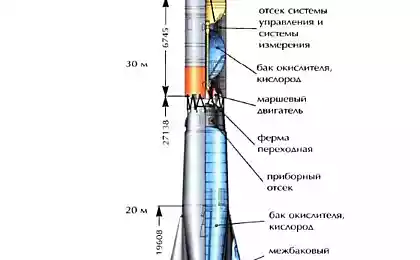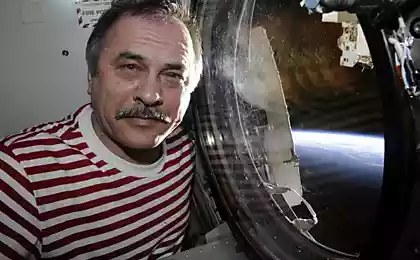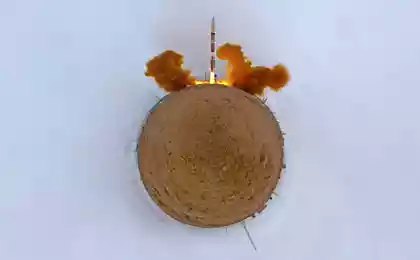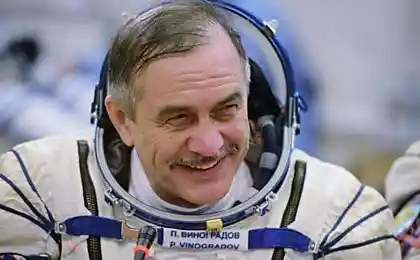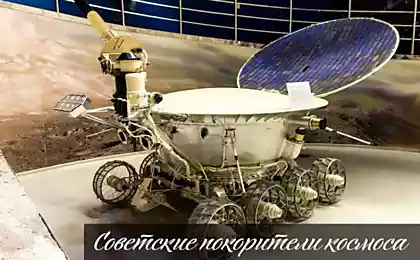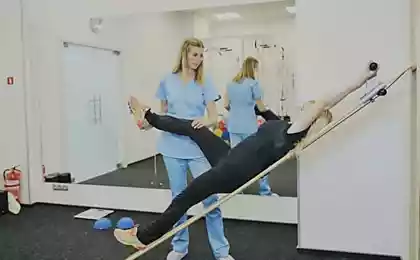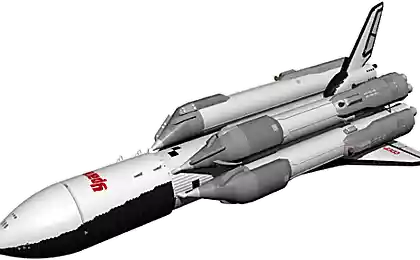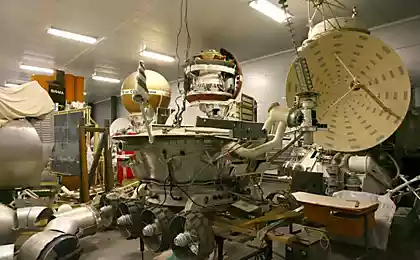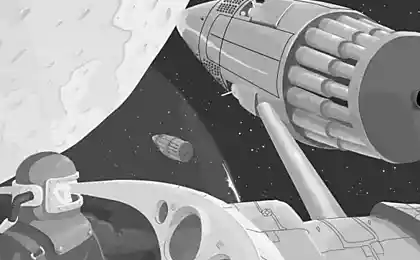567
10 medical problems that can put an end to the deep space research
Ninety three million four hundred five thousand two hundred eighty one
Since humanity is going in the relatively near future all-taki to begin the colonization of the moon and other celestial bodies of our Solar system, it is likely you would like to know about the risks and health problems that may with a certain probability to occur in the space colonists? If so, then check out our compilation of the 10 most probable health problems that will have to face (if we don't decide up to this point) the pioneers of the era of human space colonization.
Heart problems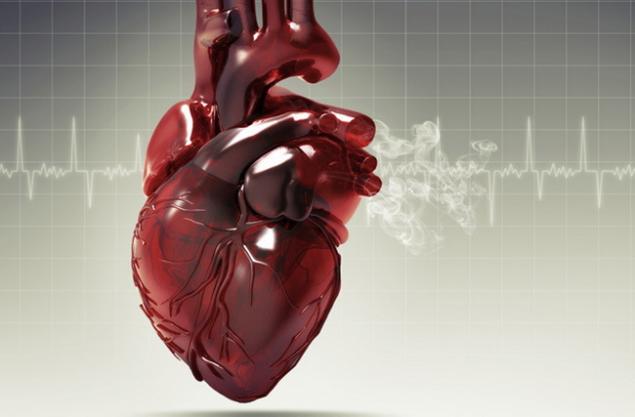
Western medical research and observation over the 12 astronauts showed that prolonged stay in microgravity the human heart at 9.4 percent stronger acquires a spherical shape, which in turn can cause a variety of problems with his work. Particularly acute this problem may become prolonged space travel, e.g. to Mars.
"The heart works in space is not the way it works in earth's gravity, which in turn can lead to the loss of his muscle mass," says Dr. James Thomas of NASA.
"All this will entail serious consequences after the return to Earth, so at the moment we are looking for possible ways to avoid or at least reduce this loss of muscle mass".
Experts note that after returning to Earth heart finds its original form, however, it was known as one of the most important organs of our body will behave after a long flight. Doctors have known cases where returning back the astronauts experience dizziness and disorientation. In some cases there is an abrupt change in blood pressure (it is a sharp decline), especially when one tries to get to his feet. In addition, some astronauts during missions observed arrhythmia (abnormal heart rhythm).
Researchers have noted the need to develop methods and rules that will allow travelers of deep space to avoid these types of problems. As noted, such methods and rules could be useful not only to astronauts and ordinary people on the Ground — experiencing problems of the heart, as well as those who are prescribed bed rest.
At the moment, began a five-year research program, whose task will be to determine the level of impact of space on development acceleration the astronauts of atherosclerosis (disease of blood vessels).
Drunkenness and mental disorders
Despite the fact that NASA conducted an anonymous survey was cleared in frequent use by astronauts of alcoholic beverages, in 2007 there were two instances when actually drunk astronauts from NASA allowed to fly in Russian spacecraft "Soyuz". To fly people were allowed, even after the doctors who prepared these astronauts to fly, as well as other members of the mission told the boss about the very hot condition of their colleagues.
According to the security policy of that time, NASA has said the official ban of alcohol use by astronauts in the 12 hours before a training flight. The effect of this rule is also tacitly assumed and the time of space flights. However, after the above incident, NASA was outraged at such carelessness astronauts, the Agency decided to make this rule in relation to spaceflight official.
Former astronaut Mike Mallan once told that astronauts drank alcohol before flying to dehydration (alcohol dehydrates) to ultimately reduce the load on the bladder and at the time of launch suddenly not want to use the toilet.
Its place among the hazards in the space missions and also had a psychological aspect. During a space mission Skylab 4 astronauts so "tired" to communicate with the control centre of space flights, which they are almost daily turned off the radio and ignored NASA from incoming messages. After this incident, scientists are trying to identify and solve potential adverse psychological effects that can occur in a more stressful and lengthy missions to Mars.
Lack of sleep and use of hypnotics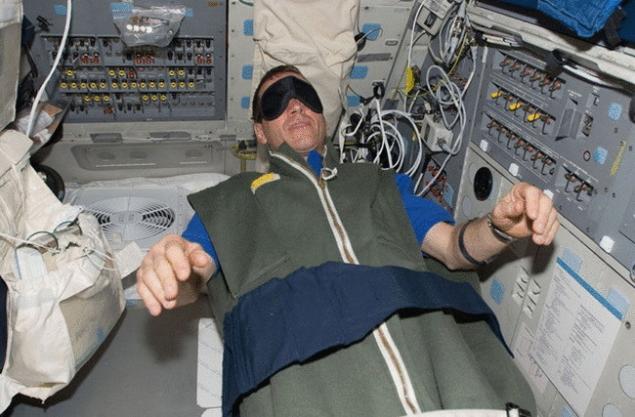
A ten-year study showed that the final weeks before the launch and during the early space missions, astronauts clearly enough sleep. Among the respondents, three out of four admitted that he used medical tools that have helped them sleep, even despite the fact that the use of such medicines could be dangerous while operating a spacecraft and other equipment. The most dangerous situation in this case would be when astronauts took the same medication and at the same time. In this case, at the time of onset of an emergency situation requiring immediate solutions, they could just sleep through it.
Despite the fact that NASA attributed to each astronaut to sleep at least eight and a half hours a day, most of them daily rested only about six hours during the mission. The seriousness of such exposure is compounded by the fact that in the last three months of training before flying every day people slept less than six and a half hours.
"Future missions to the moon, Mars and beyond will require the development of more effective measures for solving issues of sleep deprivation and optimization of human performance during space flight", — says senior researcher of the issue is Dr. Charles Kesler.
"These measures can include change in work schedule that will be implemented in the context of human exposure to certain light waves, as well as changes in behavioral strategies of the crew for a more comfortable entrance into a state of sleep, which is necessary to restore health, strength and good mood for the next day."
Hearing loss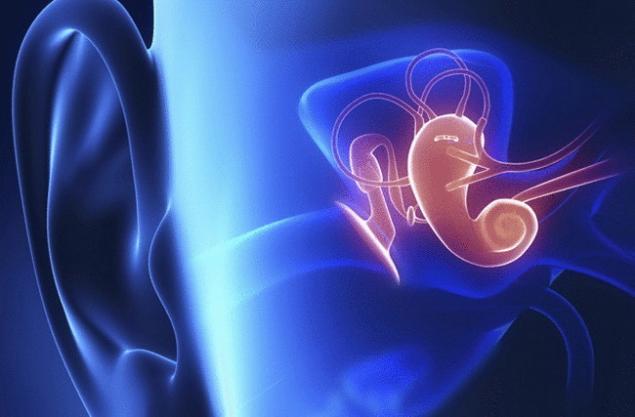
Studies have shown that even with the mission of space Shuttle and some astronauts have been cases of temporary significant and less significant hearing loss. They are most often observed when exposed to people of high audio frequencies. The members of the crew of the Soviet space station "Salyut-7" and the Russian "Peace" were also recorded minor or very significant effects of hearing loss after returning to Earth. Again, in all these cases, the cause partial or complete temporary hearing loss is exposure to high sound frequencies.
The crew of the International space station prescribed everyday wearing earplugs. To reduce noise on Board the ISS, among other measures, it was suggested the use of special sound-proof linings inside the walls of the station, as well as installing quieter fans.
However, in addition to a noisy background, hearing loss can be affected by other factors: for example, the state of the atmosphere inside the station, increased intracranial pressure, and elevated levels of carbon dioxide inside the station.
In 2015, NASA plans to help the ISS crew to begin exploring possible ways to avoid the effects of hearing loss during the one-year mission. Scientists want to see how long it is possible to avoid such effects, and find an acceptable risk for hearing loss. A key objective of the experiment is to determine how to minimize hearing loss completely, not only during a particular space mission.
Kidney stones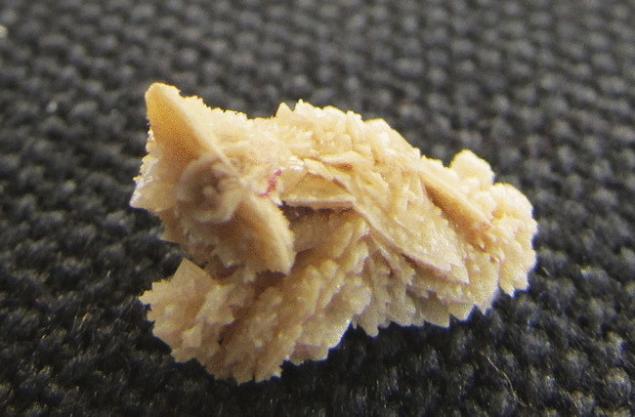
Every tenth person on Earth sooner or later manifest problem of kidney stones. However, this issue becomes more acute when it comes to the astronauts, because in space the bones of the body begin to lose nutrients faster than on Earth. Inside the body stand salt (calcium phosphate), which penetrate through the blood and accumulate in the kidneys. These salts can be compacted and take the form of stones. The size of these stones can range from microscopic to quite a serious — up to the size of a walnut. The problem is that these stones can block the blood vessels and other streams which feed on or derive from the kidneys of excess substance.
For astronauts, the risk of kidney stone is more dangerous than that in microgravity can decrease the amount of blood inside the body. In addition, many astronauts do not drink 2 liters of liquids per day, which, in turn, could ensure complete hydration of their body and not allow the stones to stagnate in the kidneys, bringing them together particles from urine.
It is noted that at least 14 American astronauts have developed a problem with kidney stones is almost never the same after completion of their space missions. In 1982 he was recorded case of acute pain from a crew member aboard the Soviet station "Salyut-7". Astronaut in two days suffered from severe pain, while his companion remained nothing but to watch helplessly as the suffering of his colleagues. At first we all thought acute appendicitis, but after a time the urine astronaut came a small kidney stone.
Scientists have very long time have developed a special ultrasound machine the size of a desktop computer, which can detect kidney stones and remove them with pulses of sound waves. I think, on Board the ship, next to Mars, such a thing could definitely come in handy.
Lung disease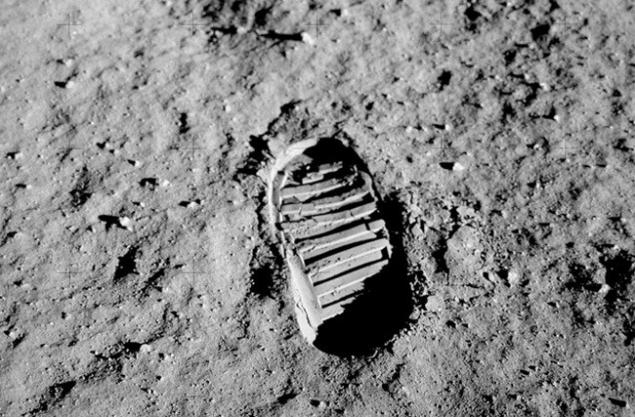
Despite the fact that we are still accurate to not know what negative health effects can cause dust from other planets or asteroids, scientists still know some very unpleasant consequences that can occur as a result of the effects of lunar dust.
The most serious effect of inhalation of dust is likely to affect the lungs. However, incredibly sharp particles of lunar dust can cause serious damage not only easy, but also heart, at the same time causing a whole bunch of different ailments ranging from severe inflammation of organs to cancer. Similar effects may arise, for example, asbestos.
Sharp dust particles can damage not only internal organs, but also cause inflammation and abrasions on the skin. To protect requires the use of special multi-layer kevlaropodobyh materials. Lunar dust can easily damage the cornea, which in turn may be the most serious emergency situation for the person in space.
Scientists note with regret that they are unable to simulate the lunar soil and carry out a complete set of tests needed to determine the effects of lunar dust on the body. One of the difficulties in the solution of this problem lies in the fact that the Earth dust particles are not in vacuum and are continually exposed to radiation. Only additional studies of dust directly on the surface of the moon itself, not in the laboratory, can provide scientists with necessary data for the development of effective methods of protection against these tiny toxic killers.
Failure of the immune system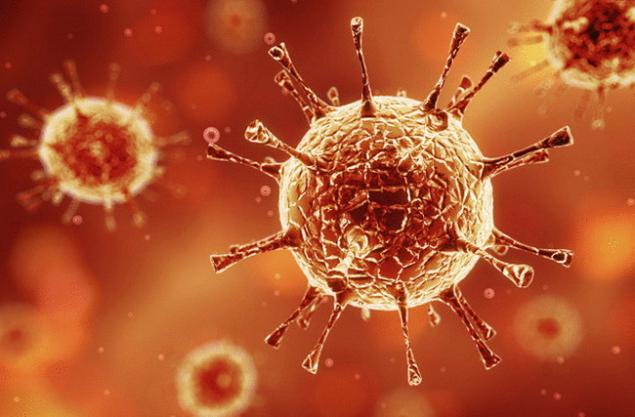
Our immune system changes and responds to any, even the slightest changes in our body. Lack of sleep, lack of nutrient intake or even normal stress — all of this weakens our immune system. But it is on the Ground. The change in the immune system in space could eventually turn into a common cold or potentially dangerous in the development of a much more serious disease.
In space, the distribution of immune cells in the body does not change much. A far greater threat to health can lead to changes in the functioning of these cells. When the functioning of the cell is reduced, suppressed the virus present in the human body, can re-awaken. And to make it actually secretly, without showing symptoms. By increasing the activity of immune cells in the immune system overreacts to stimuli, causing allergic reactions and other side effects like rashes on the skin.
"Things like radiation, microbes, stress, microgravity, sleep deprivation, and even exclusion, they can affect the immune system of crew members," says NASA immunologist Brian Kruszyn.
"In the framework of long-term space missions will increase the risk of infections, hypersensitivity and autoimmune problems in astronauts."
To solve problems with the immune system, NASA plans to use new methods of anti-radiation protection, a new approach to a balanced diet and medications.
Radiation threat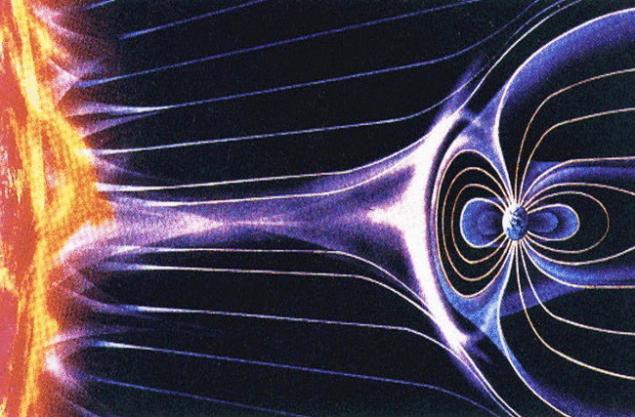
This is very unusual and very long absence of solar activity may contribute to the risk of changes in radiation levels in space. Nothing like this has happened in the last almost 100 years.
"Despite the fact that such events are not necessarily stopping factor for long missions to the moon, asteroids and even Mars, galactic cosmic radiation is itself a factor that may limit the scheduled time of carrying out these missions," says Nathan Shvadron from the Institute of earth, oceans and space research.
The consequences of this kind of exposure can be very different, ranging from radiation sickness to the development of cancer or damage to internal organs. In addition, dangerous levels of background radiation reduces the effectiveness of anti-radiation protection of the spacecraft by about 20 percent.
Within just one mission to Mars astronaut may be subject to 2/3 of the safe dose of radiation, which a person can be exposed to in the worst case throughout his life. This radiation can cause changes in DNA and increase the risk of developing cancer.
"If we talk about the cumulative dose, it is the same as that carried out a complete CT scan of the body every 5-6 days," — said the scientist Cary Zeitlin.
Cognitive problems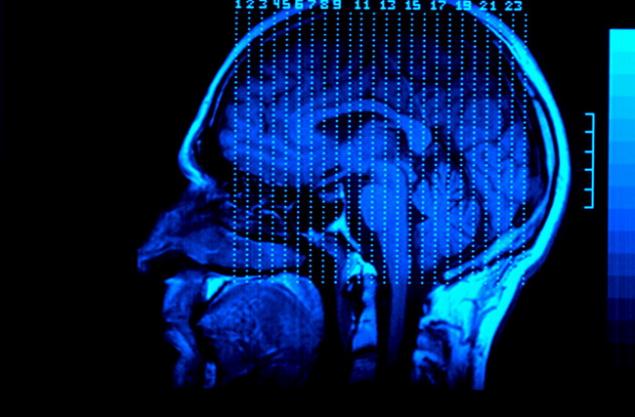
The simulation condition of being in space, scientists have discovered that exposure to highly charged particles, even in small doses causes laboratory rats to respond to the environment much slower, and rodents become more irritable. Observation of the rats also showed a change in the composition of protein in their brains.
However, scientists hasten to note that not all rats showed similar effects. If this rule applies in the case of astronauts, according to the researchers, they could identify a biological marker that indicates and predicts the imminent manifestation of these effects in astronauts. Perhaps this marker even allowed to find a way to reduce the negative effects of radiation exposure.
A more serious problem is Alzheimer's disease.
"Exposure to radiation levels equivalent to those that have to suffer the man during the flight to Mars can contribute to the development of cognitive problems and accelerate changes in the brain that are often associated with Alzheimer's disease," says neurologist Kerry O'banion.
"The longer you are in space, the greater the risk of developing the disease."
One comforting fact is that scientists have managed to explore one of the most unfortunate scenarios, the effects of radiation. They are at once subjected to laboratory mice that the level of radiation, which would be characteristic for the whole time in the mission to Mars. In turn, when people travel to Mars will be radiation dosed during three years of flight. Scientists believe that the human body can adapt to such small doses.
In addition, it is noted that the lightweight plastic materials and can provide people with greater protection from radiation compared with the currently used aluminum.
Vision loss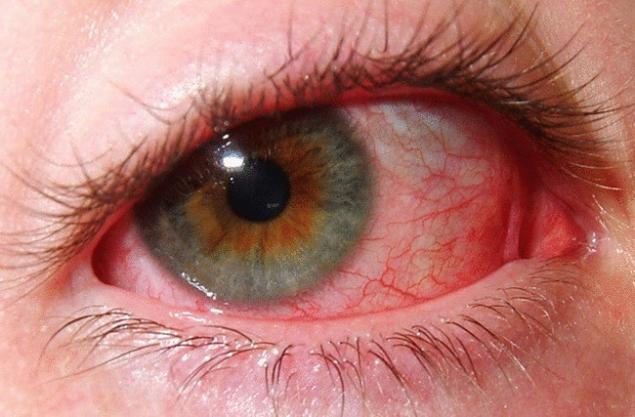
Some astronauts observed the development of serious eye problems after being in space. The longer the space mission, the more likely the chance of such unfortunate consequences.
At least among the 300 American astronauts, held medical check-up since 1989, vision problems were observed in 29 per cent of people who were in space during the two-week space Shuttle missions and 60 percent of people who over several months worked on Board the International space station.
Doctors from the University of Texas have conducted brain scans of 27 astronauts who have spent in space more than a month. 25 percent of them experienced a decrease in volume of the anterior-posterior axis of one or both eyeballs. This change leads to a farsighted vision. Again noted, the longer a person is in space the more likely this change.
Scientists believe that to explain this negative effect can rise to the head of liquid in the conditions of microgravitation. In this case, the skull begins to accumulate cerebrospinal fluid increased intracranial pressure. Seep through the bone fluid can not, therefore, begins to create pressure on the inside of the eye. Researchers are not sure yet whether the decrease this effect, the astronauts arriving at the space of more than six months. However, it is obvious that figure this out will need until the moment to send humans to Mars.
If the problem is exclusively caused by intracranial pressure, one possible solutions is to create conditions of artificial gravity each day for eight hours, while sleeping astronauts. However to talk about whether this method or not yet.
"This problem requires a solution, because otherwise it may be the main reason for long-term space travel," says scientist mark Shelhamer.
Source: hi-news.ru
Since humanity is going in the relatively near future all-taki to begin the colonization of the moon and other celestial bodies of our Solar system, it is likely you would like to know about the risks and health problems that may with a certain probability to occur in the space colonists? If so, then check out our compilation of the 10 most probable health problems that will have to face (if we don't decide up to this point) the pioneers of the era of human space colonization.
Heart problems

Western medical research and observation over the 12 astronauts showed that prolonged stay in microgravity the human heart at 9.4 percent stronger acquires a spherical shape, which in turn can cause a variety of problems with his work. Particularly acute this problem may become prolonged space travel, e.g. to Mars.
"The heart works in space is not the way it works in earth's gravity, which in turn can lead to the loss of his muscle mass," says Dr. James Thomas of NASA.
"All this will entail serious consequences after the return to Earth, so at the moment we are looking for possible ways to avoid or at least reduce this loss of muscle mass".
Experts note that after returning to Earth heart finds its original form, however, it was known as one of the most important organs of our body will behave after a long flight. Doctors have known cases where returning back the astronauts experience dizziness and disorientation. In some cases there is an abrupt change in blood pressure (it is a sharp decline), especially when one tries to get to his feet. In addition, some astronauts during missions observed arrhythmia (abnormal heart rhythm).
Researchers have noted the need to develop methods and rules that will allow travelers of deep space to avoid these types of problems. As noted, such methods and rules could be useful not only to astronauts and ordinary people on the Ground — experiencing problems of the heart, as well as those who are prescribed bed rest.
At the moment, began a five-year research program, whose task will be to determine the level of impact of space on development acceleration the astronauts of atherosclerosis (disease of blood vessels).
Drunkenness and mental disorders

Despite the fact that NASA conducted an anonymous survey was cleared in frequent use by astronauts of alcoholic beverages, in 2007 there were two instances when actually drunk astronauts from NASA allowed to fly in Russian spacecraft "Soyuz". To fly people were allowed, even after the doctors who prepared these astronauts to fly, as well as other members of the mission told the boss about the very hot condition of their colleagues.
According to the security policy of that time, NASA has said the official ban of alcohol use by astronauts in the 12 hours before a training flight. The effect of this rule is also tacitly assumed and the time of space flights. However, after the above incident, NASA was outraged at such carelessness astronauts, the Agency decided to make this rule in relation to spaceflight official.
Former astronaut Mike Mallan once told that astronauts drank alcohol before flying to dehydration (alcohol dehydrates) to ultimately reduce the load on the bladder and at the time of launch suddenly not want to use the toilet.
Its place among the hazards in the space missions and also had a psychological aspect. During a space mission Skylab 4 astronauts so "tired" to communicate with the control centre of space flights, which they are almost daily turned off the radio and ignored NASA from incoming messages. After this incident, scientists are trying to identify and solve potential adverse psychological effects that can occur in a more stressful and lengthy missions to Mars.
Lack of sleep and use of hypnotics

A ten-year study showed that the final weeks before the launch and during the early space missions, astronauts clearly enough sleep. Among the respondents, three out of four admitted that he used medical tools that have helped them sleep, even despite the fact that the use of such medicines could be dangerous while operating a spacecraft and other equipment. The most dangerous situation in this case would be when astronauts took the same medication and at the same time. In this case, at the time of onset of an emergency situation requiring immediate solutions, they could just sleep through it.
Despite the fact that NASA attributed to each astronaut to sleep at least eight and a half hours a day, most of them daily rested only about six hours during the mission. The seriousness of such exposure is compounded by the fact that in the last three months of training before flying every day people slept less than six and a half hours.
"Future missions to the moon, Mars and beyond will require the development of more effective measures for solving issues of sleep deprivation and optimization of human performance during space flight", — says senior researcher of the issue is Dr. Charles Kesler.
"These measures can include change in work schedule that will be implemented in the context of human exposure to certain light waves, as well as changes in behavioral strategies of the crew for a more comfortable entrance into a state of sleep, which is necessary to restore health, strength and good mood for the next day."
Hearing loss

Studies have shown that even with the mission of space Shuttle and some astronauts have been cases of temporary significant and less significant hearing loss. They are most often observed when exposed to people of high audio frequencies. The members of the crew of the Soviet space station "Salyut-7" and the Russian "Peace" were also recorded minor or very significant effects of hearing loss after returning to Earth. Again, in all these cases, the cause partial or complete temporary hearing loss is exposure to high sound frequencies.
The crew of the International space station prescribed everyday wearing earplugs. To reduce noise on Board the ISS, among other measures, it was suggested the use of special sound-proof linings inside the walls of the station, as well as installing quieter fans.
However, in addition to a noisy background, hearing loss can be affected by other factors: for example, the state of the atmosphere inside the station, increased intracranial pressure, and elevated levels of carbon dioxide inside the station.
In 2015, NASA plans to help the ISS crew to begin exploring possible ways to avoid the effects of hearing loss during the one-year mission. Scientists want to see how long it is possible to avoid such effects, and find an acceptable risk for hearing loss. A key objective of the experiment is to determine how to minimize hearing loss completely, not only during a particular space mission.
Kidney stones

Every tenth person on Earth sooner or later manifest problem of kidney stones. However, this issue becomes more acute when it comes to the astronauts, because in space the bones of the body begin to lose nutrients faster than on Earth. Inside the body stand salt (calcium phosphate), which penetrate through the blood and accumulate in the kidneys. These salts can be compacted and take the form of stones. The size of these stones can range from microscopic to quite a serious — up to the size of a walnut. The problem is that these stones can block the blood vessels and other streams which feed on or derive from the kidneys of excess substance.
For astronauts, the risk of kidney stone is more dangerous than that in microgravity can decrease the amount of blood inside the body. In addition, many astronauts do not drink 2 liters of liquids per day, which, in turn, could ensure complete hydration of their body and not allow the stones to stagnate in the kidneys, bringing them together particles from urine.
It is noted that at least 14 American astronauts have developed a problem with kidney stones is almost never the same after completion of their space missions. In 1982 he was recorded case of acute pain from a crew member aboard the Soviet station "Salyut-7". Astronaut in two days suffered from severe pain, while his companion remained nothing but to watch helplessly as the suffering of his colleagues. At first we all thought acute appendicitis, but after a time the urine astronaut came a small kidney stone.
Scientists have very long time have developed a special ultrasound machine the size of a desktop computer, which can detect kidney stones and remove them with pulses of sound waves. I think, on Board the ship, next to Mars, such a thing could definitely come in handy.
Lung disease

Despite the fact that we are still accurate to not know what negative health effects can cause dust from other planets or asteroids, scientists still know some very unpleasant consequences that can occur as a result of the effects of lunar dust.
The most serious effect of inhalation of dust is likely to affect the lungs. However, incredibly sharp particles of lunar dust can cause serious damage not only easy, but also heart, at the same time causing a whole bunch of different ailments ranging from severe inflammation of organs to cancer. Similar effects may arise, for example, asbestos.
Sharp dust particles can damage not only internal organs, but also cause inflammation and abrasions on the skin. To protect requires the use of special multi-layer kevlaropodobyh materials. Lunar dust can easily damage the cornea, which in turn may be the most serious emergency situation for the person in space.
Scientists note with regret that they are unable to simulate the lunar soil and carry out a complete set of tests needed to determine the effects of lunar dust on the body. One of the difficulties in the solution of this problem lies in the fact that the Earth dust particles are not in vacuum and are continually exposed to radiation. Only additional studies of dust directly on the surface of the moon itself, not in the laboratory, can provide scientists with necessary data for the development of effective methods of protection against these tiny toxic killers.
Failure of the immune system

Our immune system changes and responds to any, even the slightest changes in our body. Lack of sleep, lack of nutrient intake or even normal stress — all of this weakens our immune system. But it is on the Ground. The change in the immune system in space could eventually turn into a common cold or potentially dangerous in the development of a much more serious disease.
In space, the distribution of immune cells in the body does not change much. A far greater threat to health can lead to changes in the functioning of these cells. When the functioning of the cell is reduced, suppressed the virus present in the human body, can re-awaken. And to make it actually secretly, without showing symptoms. By increasing the activity of immune cells in the immune system overreacts to stimuli, causing allergic reactions and other side effects like rashes on the skin.
"Things like radiation, microbes, stress, microgravity, sleep deprivation, and even exclusion, they can affect the immune system of crew members," says NASA immunologist Brian Kruszyn.
"In the framework of long-term space missions will increase the risk of infections, hypersensitivity and autoimmune problems in astronauts."
To solve problems with the immune system, NASA plans to use new methods of anti-radiation protection, a new approach to a balanced diet and medications.
Radiation threat

This is very unusual and very long absence of solar activity may contribute to the risk of changes in radiation levels in space. Nothing like this has happened in the last almost 100 years.
"Despite the fact that such events are not necessarily stopping factor for long missions to the moon, asteroids and even Mars, galactic cosmic radiation is itself a factor that may limit the scheduled time of carrying out these missions," says Nathan Shvadron from the Institute of earth, oceans and space research.
The consequences of this kind of exposure can be very different, ranging from radiation sickness to the development of cancer or damage to internal organs. In addition, dangerous levels of background radiation reduces the effectiveness of anti-radiation protection of the spacecraft by about 20 percent.
Within just one mission to Mars astronaut may be subject to 2/3 of the safe dose of radiation, which a person can be exposed to in the worst case throughout his life. This radiation can cause changes in DNA and increase the risk of developing cancer.
"If we talk about the cumulative dose, it is the same as that carried out a complete CT scan of the body every 5-6 days," — said the scientist Cary Zeitlin.
Cognitive problems

The simulation condition of being in space, scientists have discovered that exposure to highly charged particles, even in small doses causes laboratory rats to respond to the environment much slower, and rodents become more irritable. Observation of the rats also showed a change in the composition of protein in their brains.
However, scientists hasten to note that not all rats showed similar effects. If this rule applies in the case of astronauts, according to the researchers, they could identify a biological marker that indicates and predicts the imminent manifestation of these effects in astronauts. Perhaps this marker even allowed to find a way to reduce the negative effects of radiation exposure.
A more serious problem is Alzheimer's disease.
"Exposure to radiation levels equivalent to those that have to suffer the man during the flight to Mars can contribute to the development of cognitive problems and accelerate changes in the brain that are often associated with Alzheimer's disease," says neurologist Kerry O'banion.
"The longer you are in space, the greater the risk of developing the disease."
One comforting fact is that scientists have managed to explore one of the most unfortunate scenarios, the effects of radiation. They are at once subjected to laboratory mice that the level of radiation, which would be characteristic for the whole time in the mission to Mars. In turn, when people travel to Mars will be radiation dosed during three years of flight. Scientists believe that the human body can adapt to such small doses.
In addition, it is noted that the lightweight plastic materials and can provide people with greater protection from radiation compared with the currently used aluminum.
Vision loss

Some astronauts observed the development of serious eye problems after being in space. The longer the space mission, the more likely the chance of such unfortunate consequences.
At least among the 300 American astronauts, held medical check-up since 1989, vision problems were observed in 29 per cent of people who were in space during the two-week space Shuttle missions and 60 percent of people who over several months worked on Board the International space station.
Doctors from the University of Texas have conducted brain scans of 27 astronauts who have spent in space more than a month. 25 percent of them experienced a decrease in volume of the anterior-posterior axis of one or both eyeballs. This change leads to a farsighted vision. Again noted, the longer a person is in space the more likely this change.
Scientists believe that to explain this negative effect can rise to the head of liquid in the conditions of microgravitation. In this case, the skull begins to accumulate cerebrospinal fluid increased intracranial pressure. Seep through the bone fluid can not, therefore, begins to create pressure on the inside of the eye. Researchers are not sure yet whether the decrease this effect, the astronauts arriving at the space of more than six months. However, it is obvious that figure this out will need until the moment to send humans to Mars.
If the problem is exclusively caused by intracranial pressure, one possible solutions is to create conditions of artificial gravity each day for eight hours, while sleeping astronauts. However to talk about whether this method or not yet.
"This problem requires a solution, because otherwise it may be the main reason for long-term space travel," says scientist mark Shelhamer.
Source: hi-news.ru






